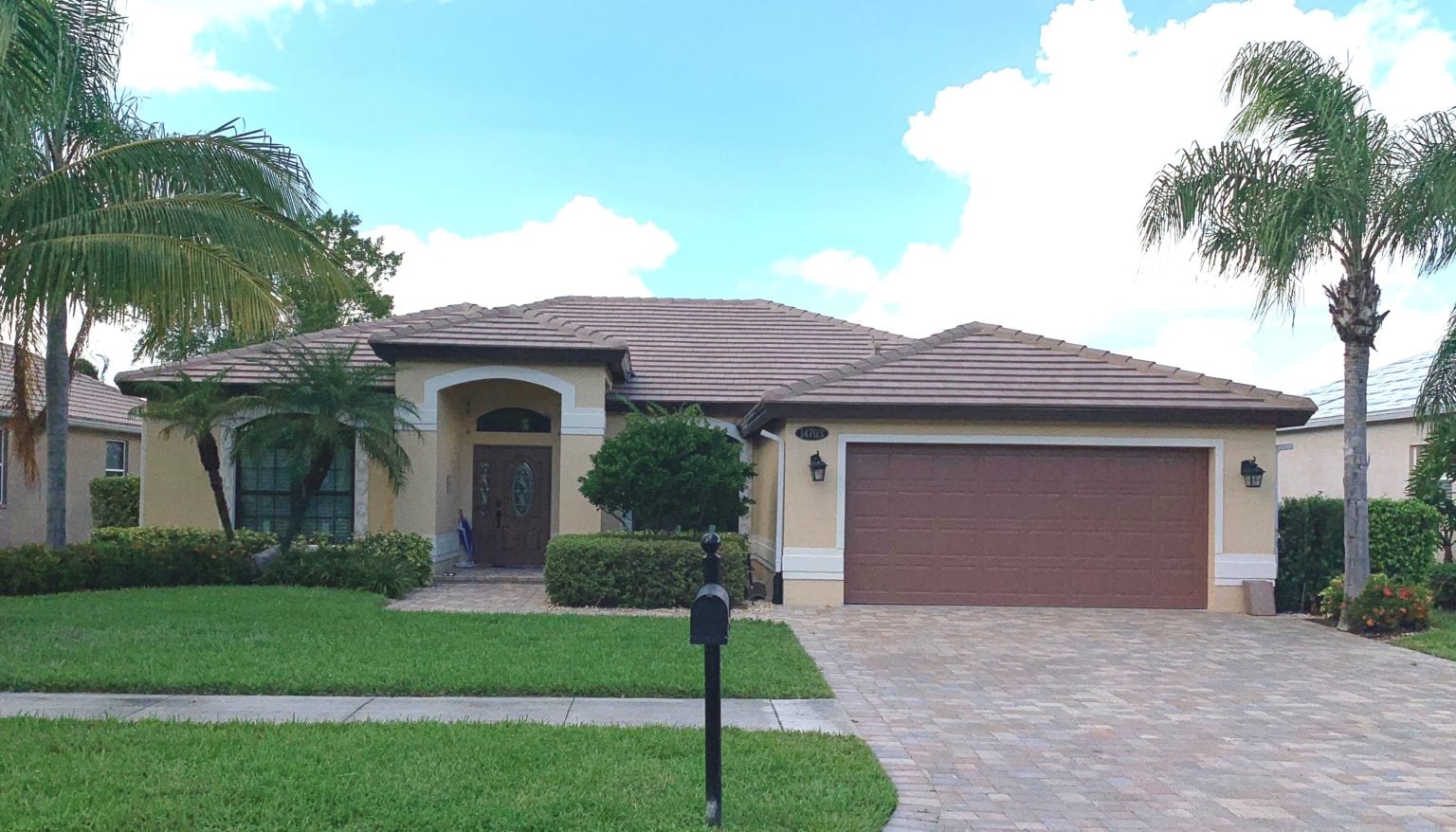
Did you know that the shape of your home’s roof can help prevent extensive damage from hurricanes? Or that one particular roof shape can significantly reduce the chances of wind damage?
Hip roofs are a wise investment for Southwest Florida homeowners, as they create a more aerodynamic profile that minimizes uplift and enhances roof stability.
Call 239-317-2000 or contact us online today to request a free, no-obligation inspection.
How Much Wind Can a Roof Withstand?
Generally, wind speeds of 50 miles per hour or more can cause significant roof damage. However, winds exceeding 100 mph can completely lift off a roof.
Florida’s hurricane season can bring powerful storms capable of generating gusts above 100 mph. Category 4 and 5 hurricanes can produce wind speeds exceeding 150 mph, posing a serious threat to a home’s structural integrity.
A properly designed and installed hip roof can resist these high-speed winds and minimize damage.
Contact us online or call 239-317-2000 today to get started with a free, no-obligation roof inspection.
What Is a Hip Roof?
Hip roofs have been used in the U.S. for centuries. Thanks to their extreme durability, they’re now the most widely used roof shape.
The easiest way to envision a hip roof is to picture a simple rectangular home with four square walls. Hip roofs slope upward on all four sides, with each plane meeting at the peak or ridge, which is the highest part of your roof. The hips are the sloped sections that extend downward from the ridge and meet at the wall plates.
Call 239-317-2000 or contact us online today to request a free, no-obligation inspection.
Hip Roof Variations
- Simple hip roofs are the most common. They have two polygonal and two triangular sides that meet at the top to form a ridge.
- Pyramid hip roofs have a simple roof design that features a single peak.
- Cross-hipped roofs are ideal for homes with multiple wings. The line where the two roofs converge is a valley.
- Mansard roofs have double-sloped sides with a steeper bottom slope.
- Combination roofs are similar to the Mansard style with a flared lower section.
- Jerkinhead roofs are half-hipped with shortened sides.
Hip Roofs vs. Gable Roofs
Gable roofs only slope on two sides, with triangular end walls on the other two sides. These “gable ends” channel wind and make a roof much more vulnerable to lifting or being blown off.
Because hip roofs slope from the peak down, high winds are diverted up and over the structure, so there’s less chance of the roof getting damaged or lifted.
Other Factors That Can Affect the Extent of Wind Damage
Along with the roof shape, several factors help determine the best roof for hurricanes, including:
- Roof material: Tile roofing is one of the most common roofing materials in Southwest Florida because of its eye-catching beauty and wind and impact resistance. Metal roofing is another hurricane-resistant material.
- Roof slope: A roof’s slope or pitch can influence wind resistance, with low-sloped roofs more vulnerable to uplift forces. Hip roofs have slopes on all four sides, offering the best protection against wind damage and uplift.
- Installation quality: Professionally installed roofs made from quality materials are more likely to withstand strong winds because the roof is properly secured.
- Fastening system: High-quality, correctly placed fasteners like hurricane clips and straps enhance a roof’s ability to resist wind uplift and prevent roof detachment.
A roof’s age, whether it’s routinely inspected and maintained, and proximity to the coast can also affect its ability to resist wind damage.
What Does Roof Wind Damage Look Like?
Depending on a storm’s severity and a roof’s structural integrity, common signs of wind damage include:
- Damaged or missing shingles
- Curled or lifted shingles
- Roof leaks
- Dents or punctures
- Cracked or broken tiles
- Roof deck uplift
- Damaged flashing, gutters, and downspouts
- Visible structural damage
Contact us online or call 239-317-2000 today to get started with a free, no-obligation roof inspection.
Contact Allstate Construction Inc. for a Free, No-Obligation Roof Inspection
For over 30 years, Allstate Construction Roofing Inc. has delivered top-quality commercial and residential roof replacement and repair trusted by over 50,000 customers.
If you need roof restoration after a storm, we’re the team to turn to for premium roofing materials, great customer service, and superior installation.
Contact Allstate Construction Roofing Inc. online or call 239-317-2000 to request your free, no-obligation roof inspection in Southwest Florida.






